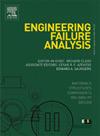钢基制动盘激光熔覆涂层制备方法和制动性能研究
IF 5.7
2区 工程技术
Q1 ENGINEERING, MECHANICAL
引用次数: 0
摘要
近年来,随着高速列车运行速度的不断提高,制动盘在紧急制动时所面临的热负荷挑战也越来越严峻。在制动盘摩擦表面应用表面强化技术制作高性能涂层,对于提高制动盘的抗热疲劳性能和延长其使用寿命至关重要。本研究以 1:1 比例的高速列车钢基制动盘模型为研究对象,使用 Stellite 21 钴基合金粉末作为涂层材料。采用激光熔覆技术在制动盘表面成功制备了高性能涂层。为验证激光熔覆制动盘(LC-disc)的制备方法,进行了 50 至 400 公里/小时的高速铁路制动测功机测试。制备的激光熔覆制动盘具有良好的成形质量,通过无损检测未发现裂纹、气孔或未完全熔合等缺陷,粉末利用率超过 80%。涂层的微观结构主要由 γ-Co 相组成,还有少量的 ε-Co 和 M7C3。制动测功机测试后,涂层中的柱状晶粒发生了变形或回复再结晶,导致晶粒细化。在制动过程中,LC-圆盘表现出稳定的摩擦系数(COF),介于 0.296 和 0.44 之间。COF 随初始速度和刹车片双边推力的增加而降低,在潮湿条件和刹车片推力较大的情况下更低,这表明 LC 盘适用于更高的速度和更苛刻的工作环境。此外,制动时摩擦表面的最高温度随初始速度的增加而增加,在初始速度为 400 km/h 时达到约 728.5 °C,表明这种制动盘可以适应高速列车的更高速度。然而,反复的热应力循环导致涂层螺栓孔处形成热疲劳裂纹。本研究采用的激光熔覆涂层制备方法既高效又经济,能制备出具有高制动性能的涂层。这种方法能满足更高速度的高速列车的运行要求,并能延长制动盘的使用寿命,通过采用先更换后维修的方法大大降低了经济成本。它还为其他大型部件的涂层制备提供了工程范例。本文章由计算机程序翻译,如有差异,请以英文原文为准。
Steel-based brake disc laser cladding coating preparation method and brake performance study
In recent years, as the operating speed of high-speed trains has continued to increase, the thermal load challenges faced by brake discs during emergency braking have become more severe. Applying surface strengthening techniques to create high-performance coatings on the friction surface of brake discs is crucial for enhancing their thermal fatigue resistance and extending their service life. This study focuses on a 1:1 scale model of a steel-based brake disc for high-speed trains, using Stellite 21 cobalt-based alloy powder as the coating material. High-performance coatings were successfully prepared on the surface of the brake disc using laser cladding technology. A high-speed railway brake dynamometer test, ranging from 50 to 400 km/h, was conducted to validate the method for preparing the laser cladded brake disc (LC-disc). The prepared LC-disc exhibited good forming quality, with no defects such as cracks, pores, or incomplete fusion detected through non-destructive testing, and a powder utilization rate of over 80 %. The microstructure of the coating primarily consisted of the γ-Co phase, with minor amounts of ε-Co and M7C3. After the braking dynamometer test, columnar grains in the coating underwent deformation or recovery recrystallization, leading to grain refinement. During braking, the LC-disc demonstrated a stable coefficient of friction (COF), ranging between 0.296 and 0.44. The COF decreased with increasing initial speed and bilateral pad thrust, and was lower under wet conditions and higher pad thrust, indicating the LC-disc’s suitability for higher speeds and more demanding operating environments. Additionally, the maximum temperature of the friction surface during braking increased with the initial speed, reaching approximately 728.5 °C at an initial speed of 400 km/h, suggesting that this brake disc can adapt to the higher speeds of high-speed trains. However, repeated thermal stress cycles led to the formation of thermal fatigue cracks at the bolt holes of the coating. The laser cladding coating preparation method used in this study is efficient and cost-effective, producing coatings with high braking performance. This method meets the operational requirements of higher-speed high-speed trains and can extend the service life of brake discs, significantly reducing economic costs by adopting a replace-before-repair approach. It also provides an engineering example for the preparation of coatings on other large parts.
求助全文
通过发布文献求助,成功后即可免费获取论文全文。
去求助
来源期刊

Engineering Failure Analysis
工程技术-材料科学:表征与测试
CiteScore
7.70
自引率
20.00%
发文量
956
审稿时长
47 days
期刊介绍:
Engineering Failure Analysis publishes research papers describing the analysis of engineering failures and related studies.
Papers relating to the structure, properties and behaviour of engineering materials are encouraged, particularly those which also involve the detailed application of materials parameters to problems in engineering structures, components and design. In addition to the area of materials engineering, the interacting fields of mechanical, manufacturing, aeronautical, civil, chemical, corrosion and design engineering are considered relevant. Activity should be directed at analysing engineering failures and carrying out research to help reduce the incidences of failures and to extend the operating horizons of engineering materials.
Emphasis is placed on the mechanical properties of materials and their behaviour when influenced by structure, process and environment. Metallic, polymeric, ceramic and natural materials are all included and the application of these materials to real engineering situations should be emphasised. The use of a case-study based approach is also encouraged.
Engineering Failure Analysis provides essential reference material and critical feedback into the design process thereby contributing to the prevention of engineering failures in the future. All submissions will be subject to peer review from leading experts in the field.
 求助内容:
求助内容: 应助结果提醒方式:
应助结果提醒方式:


